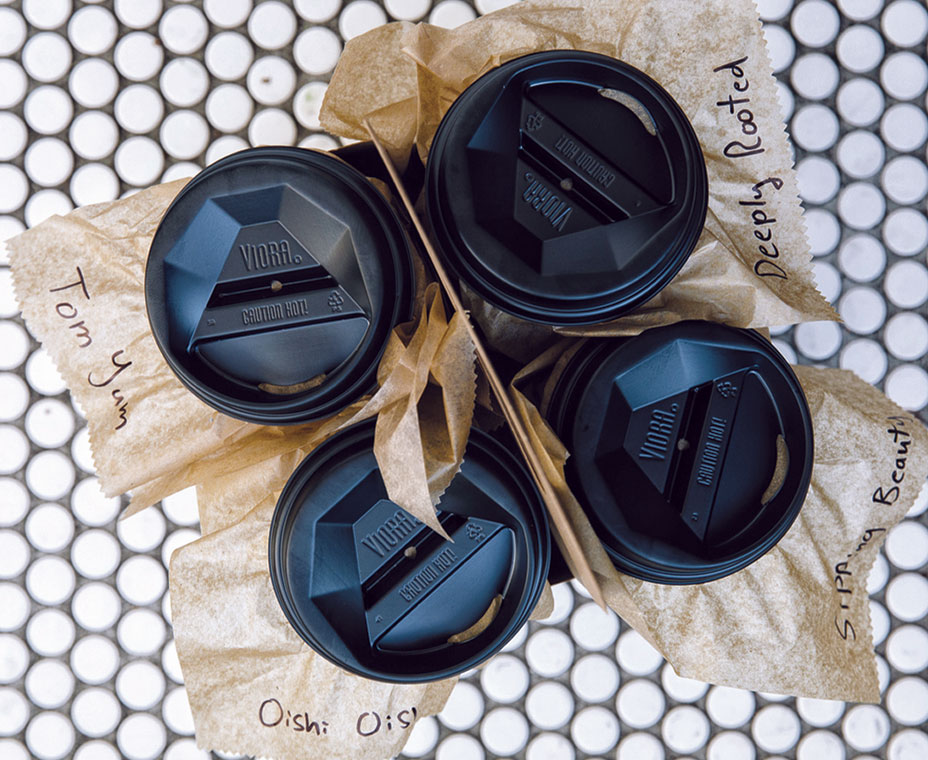Specialized diets with claims of cleansing the body and promoting health date back centuries, from old wives’ tale remedies all the way up to Atkins and paleo. In recent years, however, the trend has evolved to include short, restrictive detoxes often in the form of cold-pressed juices, bone broths, and clean soups.
While the jury is still out as to whether such cleanses deliver on good health, some restaurants—particularly in the limited-service space—are adding cleanse items to their menus. But instead of making unsubstantiated health claims, many focus on the holistic healthfulness of those products, which customers can use as they see fit.
Brodo Broth Company in New York City proudly touts the benefits of its broths, which are made from the bones of grass-fed animals and organic vegetables. Still, the brand is cautiously stepping into the cleanse space.
CEO Andrew Garner says customers use the broths for a variety of dietary purposes—whether it’s a quick pick-me-up of hot broth on a cold morning or a supplement to meals throughout the week. (Brodo also sells frozen broths at its two locations and six-packs online.) Brodo’s chef and founder, Marco Canora, adds that while Brodo hasn’t exclusively pushed its broths as cleanse items, some customers are using the products to do so. Plus, the company plans to emphasize the broth’s potential as a detox diet in the future.
“A lot of our consumers do it without us telling them to do it,” Canora says. “A lot of people are using it as a meal replacement or a three-day fast.”
Garner says Brodo’s limited-service format works well with its menu, noting that customers are by and large getting the product in-store rather than ordering it online. The menu comprises nourishing options like a hearty beef broth with veggies and ginger and a vegan seaweed and mushroom broth. Brodo has two locations in Manhattan, with the original shop in the East Village being a mere pickup window attached to Canora’s full-service restaurant Hearth. The newer store is slightly bigger (350 square feet), allowing the team to blend in on-trend fats like coconut oil, butter, and bone marrow.
As Canora puts it, “You walk in, get a cup of broth, and you walk out”—something that works well for some customers. But others grab larger amounts of the broth to use as a high-protein alternative to the “liquid sugar” that Canora says can be found in juice cleanses.
Across the country, Nékter Juice Bar is an old hat in the detox biz. Now boasting about 100 locations, the Santa Ana, California–based concept offers one- to five-day cleanses with an array of cold-pressed juices. CEO Steve Schulze says that the cleanse product has never been a primary focus for the brand, but it has provided an important complement to the menu.
“We never believed in the cessation diets … the idea that a cleanse is [meant] to starve yourself and lose weight,” Schulze says. “The idea of a cleanse is that it’s to, in a sense, give your body a break, to give you motivation or incentive to take that next step so that you begin a healthier lifestyle.”
Garner echoes that sentiment. The broths at Brodo can complement a person’s already existing diet, whether it be as a base for a healthy soup for dinner or a regular meal replacement with healthy snacks throughout the day, he says.
Schulze says Nékter eschews fillers in favor of pounds of fruit and veggies, with no added sugars. Its cleanse packages include six bottles of juice per day with blends like the Classic Greens—orange, cucumber, pineapple, spinach, kale, and cilantro—and the Turmeric Cintrus Skinny Lemonade with orange, grapefruit, turmeric, lemon, black pepper, and superfood camu camu. And unlike some detox purveyors, Nékter does not discourage snacks while on the cleanse.
“When we started Nékter, the goal was to reinvent the juice space. We’d seen the way in which the legacy brands, to a certain degree, bastardized themselves through sweets and additives,” Schulze says.
David Wright, senior marketing manager at the Hartman Group, says cleanses and detoxes are considered essential elements in tracking consumer diet and eating trends. Last year’s Health and Wellness study found that 9 percent of consumers had tried cleanse or detox-related eating approaches, up about 3 percentage points from 2015.
“Cleanses and detoxes relate to contemporary consumer understandings of wellness involving the proactive management of health conditions for holistic wellness aims,” Wright says via e-mail. “Specialized dietary approaches like detoxes and cleanses are used not only in a quest for wellness, energy, and weight management … [but also] as a way for consumers to experiment.”
Even with Nekter’s cleanse packages, Schulze says he’s not so sure limited-service and fast-casual restaurants are the best vehicle for those products. Many restaurants are selling juices as one-off items, but cleanses are a much more specialized item.
“In the fast-casual space, I think you’ll see very few people that will delve into it; it’s more expensive,” Schulze says. “With fast casual, you’re looking to drive a ticket price of like $8–$12. If you’re selling a cleanse, you’re looking at $30 or $40 or $50.”
Canora doesn’t view cleanses as a fleeting trend. “There’s only going to be more and more awareness of the importance of food and how you manage your diet … whether it’s fasting or cleansing or whatever,” he says.
Garner goes further to explain that cleanses will always be a part of Brodo’s formula, but only a part. “A lot of who we are is really about being part of a broader set of uses. Some people use us as their morning coffee; some people use us to skip the occasional meal,” he says. “Some do it so they don’t have a pint of ice cream.”













